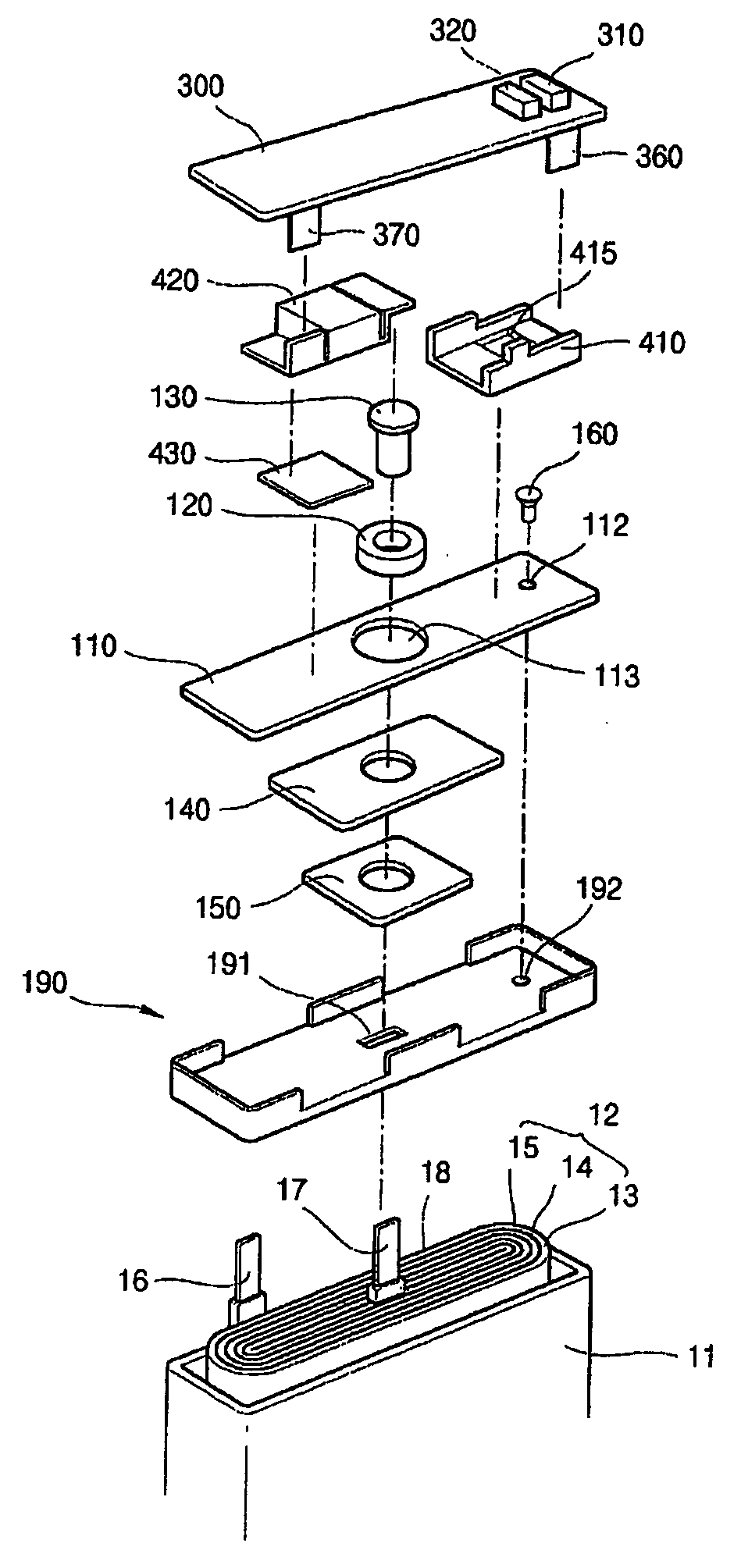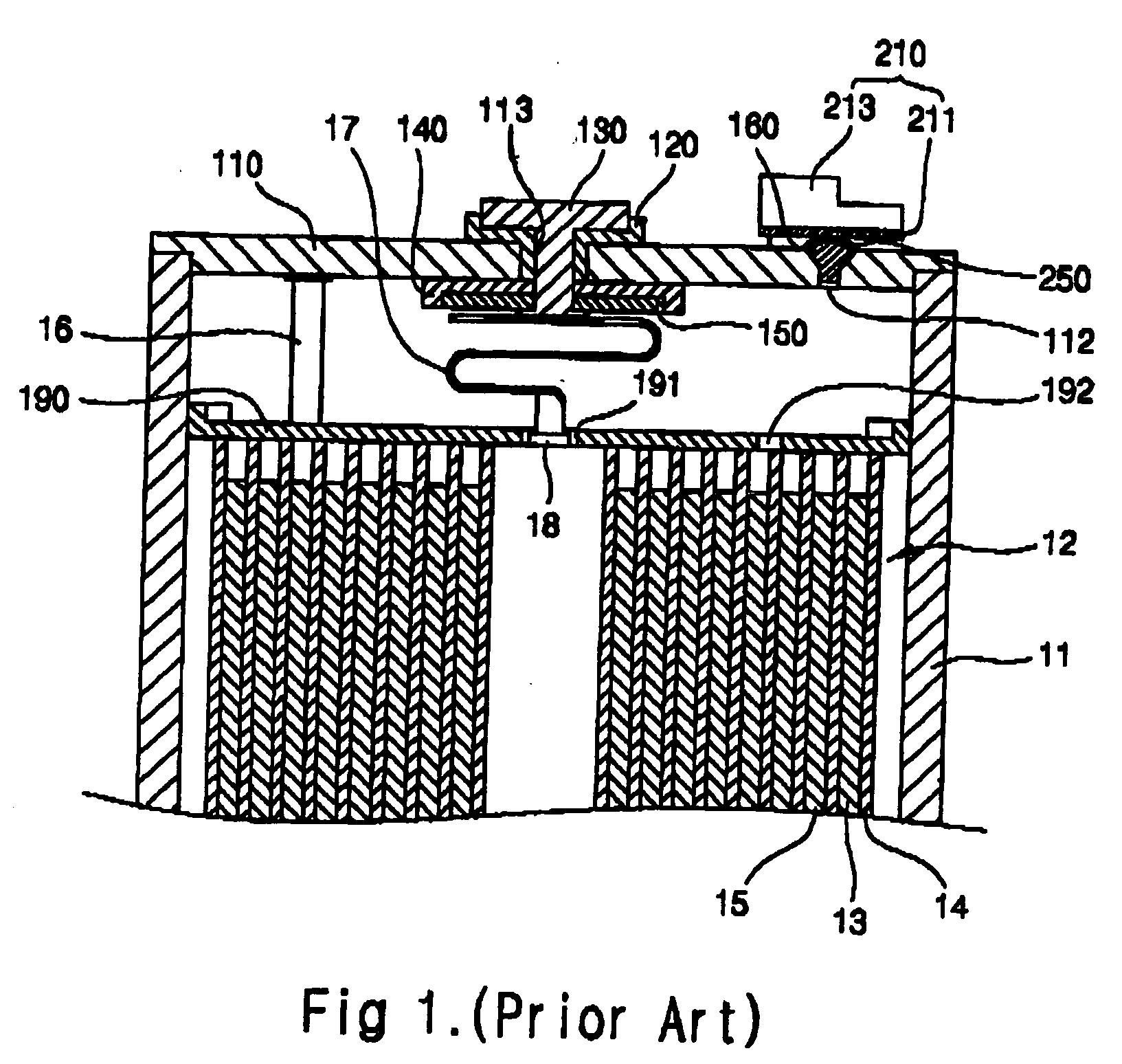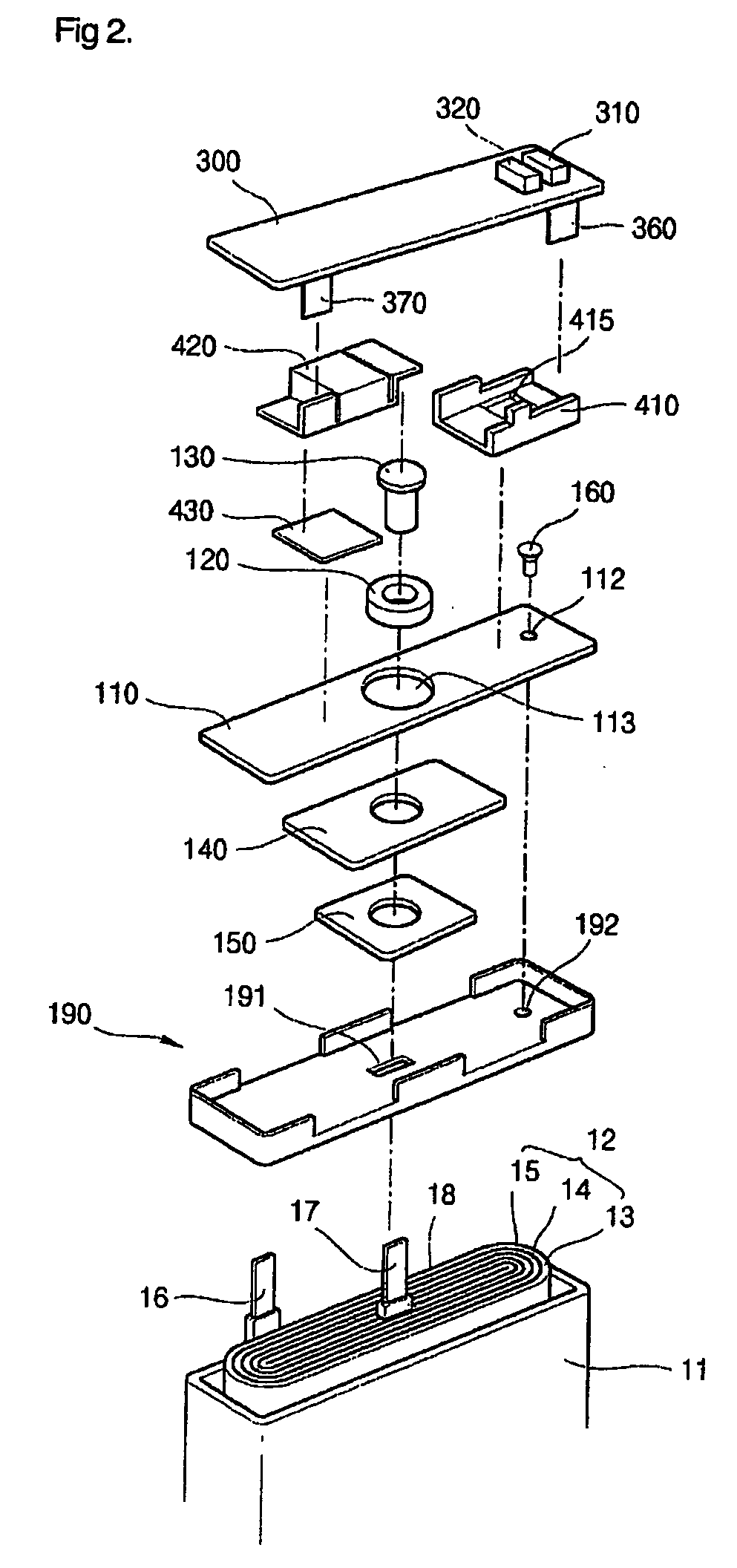Secondary battery having lead plate attached thereto
a lead plate and secondary battery technology, applied in the field of secondary batteries, can solve the problems of potential electric shock, difficult to successfully use ultra-sonic welding or resistance welding on these materials, and difficulty in electrically connecting the electrodes of the bare cell to the electric terminal, and achieves the effect of reliable coupling strength and easy welding
- Summary
- Abstract
- Description
- Claims
- Application Information
AI Technical Summary
Benefits of technology
Problems solved by technology
Method used
Image
Examples
Embodiment Construction
[0025] Hereinafter, exemplary embodiments of the present invention will be described with reference to the accompanying drawings. In the following description and drawings, the same reference numerals are used to designate the same or similar components.
[0026] Referring now to FIG. 2, a lithium pack battery has a bare cell which includes a can 11, a electrode assembly 12 contained in the can 11, and a cap assembly coupled to the open upper end of the can 11 for sealing it.
[0027] The electrode assembly 12 is formed by winding a positive electrode 13, a separator 14, and a negative electrode 15, which are formed in a thin plate shape, a film shape or an eddy shape. Insulating tape 18 is wound about respective boundary portions wherein positive and negative leads 16 and 17 are led out of the electrode assembly 12 in order to prevent a short circuit between the two electrodes 13 and 15. The can 11 is generally made of aluminum or an aluminum alloy having the shape of a cuboid. The can...
PUM
| Property | Measurement | Unit |
|---|---|---|
| thickness | aaaaa | aaaaa |
| thickness | aaaaa | aaaaa |
| thickness | aaaaa | aaaaa |
Abstract
Description
Claims
Application Information
 Login to View More
Login to View More - R&D
- Intellectual Property
- Life Sciences
- Materials
- Tech Scout
- Unparalleled Data Quality
- Higher Quality Content
- 60% Fewer Hallucinations
Browse by: Latest US Patents, China's latest patents, Technical Efficacy Thesaurus, Application Domain, Technology Topic, Popular Technical Reports.
© 2025 PatSnap. All rights reserved.Legal|Privacy policy|Modern Slavery Act Transparency Statement|Sitemap|About US| Contact US: help@patsnap.com



